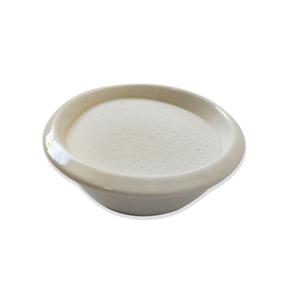Professional industry ceramic supplier, silicon nitride, silicon carbide, aluminum nitride and any other kinds of ceramics.
PRODUCT PARAMETERS
Description
Overview of high temperature kiln pipline equipment thermal insulation ceramic fiber paper aerogel base 1260 ceramic fibre paper
high temperature kiln pipline equipment thermal insulation ceramic fiber paper aerogel base 1260 ceramic fibre paper is a synthetic porous ultralight material derived from a gel, in which the liquid component has been replaced with a gas. The result is a solid with extremely low density and low thermal conductivity, often nicknamed “frozen smoke.” Despite its fragile appearance, it can be engineered to be remarkably strong, holding the title of the world’s best insulating solid material.
Features of high temperature kiln pipline equipment thermal insulation ceramic fiber paper aerogel base 1260 ceramic fibre paper
-
World’s Lowest Thermal Conductivity: Provides unparalleled insulation performance, far superior to traditional materials.
-
Extremely Low Density: One of the lightest solid materials known to man, with a composition of up to 99.8% air.
-
High Surface Area: Possesses an incredibly large internal surface area, making it valuable for filtration and absorption applications.
-
Versatile Composition: Can be made from various materials, including silica, carbon, and metal oxides, each with unique properties.
-
Exceptional Porosity: Its nanoporous structure is responsible for its outstanding insulating capabilities.
Specifications of high temperature kiln pipline equipment thermal insulation ceramic fiber paper aerogel base 1260 ceramic fibre paper
This ceramic fiber paper delivers serious insulation for hot kiln pipes and equipment. It uses a special aerogel base plus 1260 ceramic fibres. Together, this creates a very effective barrier against heat loss. The material withstands extreme heat well. It handles temperatures up to 1260 degrees Celsius easily. This makes it perfect for demanding industrial settings.
The paper is surprisingly light and thin. Don’t let that fool you. It packs powerful insulation into a small space. This saves room around pipes and equipment. Installation is simpler too. The paper is flexible. You can bend it to fit curved surfaces or tight spots. It wraps neatly around pipes and valves. This ensures complete coverage without big gaps.
Heat doesn’t pass through this paper easily. Its thermal conductivity is very low. This means less energy escapes. Your kiln stays hotter using less fuel. You save money on energy costs. The material is also chemically stable. It won’t break down or release fumes at high temperatures. This provides safe, long-lasting performance. It resists most chemicals found in kiln atmospheres.
We offer different thicknesses and densities. Common thicknesses are 3mm, 5mm, 6mm, and 10mm. Density typically ranges from 220 to 250 kg/m³. You choose the specs matching your specific heat needs and space limits. The paper is strong for its weight. It handles routine handling and installation stress. Be careful though. It can tear if pulled too hard.
This insulation paper cuts heat loss significantly. It boosts your kiln’s efficiency. Equipment runs better with consistent temperatures. You get lower energy bills and more reliable operation. It’s a practical solution for high-temperature pipework.
Applications of high temperature kiln pipline equipment thermal insulation ceramic fiber paper aerogel base 1260 ceramic fibre paper
High temperature kiln pipelines need good insulation. Heat loss wastes energy. Hot surfaces also create safety hazards. Our ceramic fiber paper solves these problems. This insulation material handles extreme heat up to 1260°C. It works perfectly for pipes carrying hot gases or liquids in kilns and furnaces. The ceramic fiber paper is thin and flexible. You wrap it easily around pipes. It fits complex shapes and tight spaces. Installation is straightforward. This saves time and labor costs.
The paper is made from special spun ceramic fibers. These fibers resist very high temperatures. They stay strong and don’t melt. The fibers create millions of tiny air pockets. Air is a poor heat conductor. These pockets trap heat effectively. This stops heat escaping from the pipe. The surface stays much cooler. Workers avoid burns. Energy costs drop significantly.
We add an aerogel backing for even better performance. Aerogel is an amazing insulator. It traps air extremely well. The aerogel layer makes the insulation much thinner. You get the same protection with less bulk. This is crucial where space is limited around pipes. The combined ceramic fiber and aerogel create a powerful thermal barrier. Heat stays inside the pipe where it belongs.
This insulation is lightweight. It doesn’t add heavy loads to pipe supports. It stays resilient under vibration and thermal cycling. Pipes expand and contract with heat. The flexible paper moves with them. It doesn’t crack or crumble. This ensures long-lasting insulation performance. You get reliable protection year after year. It also reduces surface temperatures dramatically. This improves safety near hot pipes. Maintenance becomes safer and easier. The material itself is non-combustible. It adds fire safety to your operation. Using this insulation lowers energy bills. It makes your process more efficient and cost-effective.
Company Profile
Tanki New Materials Co.Ltd. focus on the research and development, production and sales of ceramic products, serving the electronics, ceramics, chemical and other industries. Since its establishment in 2015, the company has been committed to providing customers with the best products and services, and has become a leader in the industry through continuous technological innovation and strict quality management.
Our products includes but not limited to Aerogel, Aluminum Nitride, Aluminum Oxide, Boron Carbide, Boron Nitride, Ceramic Crucible, Ceramic Fiber, Quartz Product, Refractory Material, Silicon Carbide, Silicon Nitride, ect. please feel free to contact us.

Payment Methods
T/T, Western Union, Paypal, Credit Card etc.
Shipment Methods
By air, by sea, by express, as customers request.
5 FAQs of high temperature kiln pipline equipment thermal insulation ceramic fiber paper aerogel base 1260 ceramic fibre paper
What exactly is this ceramic fiber paper?
It’s a flexible insulation material made from spun ceramic fibers. Think of paper-like sheets designed to handle extreme heat. The aerogel base boosts its insulating power significantly. This makes it ideal for wrapping pipes inside high-temperature kilns.
How hot can it safely get?
This specific paper withstands continuous temperatures up to 1260 degrees Celsius (2300 degrees Fahrenheit). That’s its maximum safe operating limit. Going beyond this temperature risks damaging the material. It won’t perform correctly.
Is it safe for direct contact with hot pipes?
Yes. The ceramic fibers are inherently non-combustible. They won’t catch fire. The paper contains no asbestos either. It meets standard safety certifications for industrial high-temperature insulation. You can wrap it directly onto hot kiln pipes.
How do you install it on pipelines?
Installation is straightforward. Measure the pipe circumference. Cut the paper to the needed length and width using regular scissors or a knife. Wrap it tightly around the clean pipe surface. Secure it firmly using high-temperature resistant wire or bands. Overlap seams slightly for best results. Ensure no gaps exist.
What thickness options exist?
Common thicknesses range from 1mm to 12mm. Thicker paper provides greater insulation value. Thinner paper bends easier around tight curves. Choose the thickness based on your specific pipe temperature and the required heat loss reduction. We offer several standard sizes. Custom sizes are possible too.
Does it handle moisture or condensation?
The ceramic fibers themselves resist water absorption well. Moisture doesn’t ruin the material. Wet insulation performs poorly though. It loses much of its heat-blocking ability. Keep the paper dry before and during installation. Protect installed paper from weather or spills if possible. Let wet paper dry completely before use.
REQUEST A QUOTE
RELATED PRODUCTS
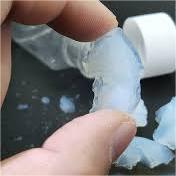
Hydrophobic/hydrophilic Silicon Aerogel SiO2 Thermal Insulation Powder/Particle
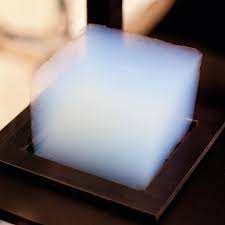
aerogel membrance coated waterproof breathable heat insulation polyester twill for outdoor jacket
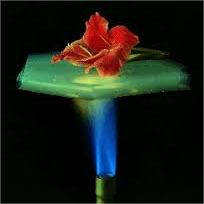
Factory Thickness insulation Aerogel Insulation Blanket with Strong Tensile Strength

Good Fireproof Customized Aerogel Thermal Insulation 3mm 6mm 10mm Blanket Special
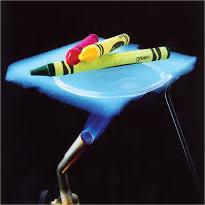
aerogel membrance outdoor functional fabric for garment
